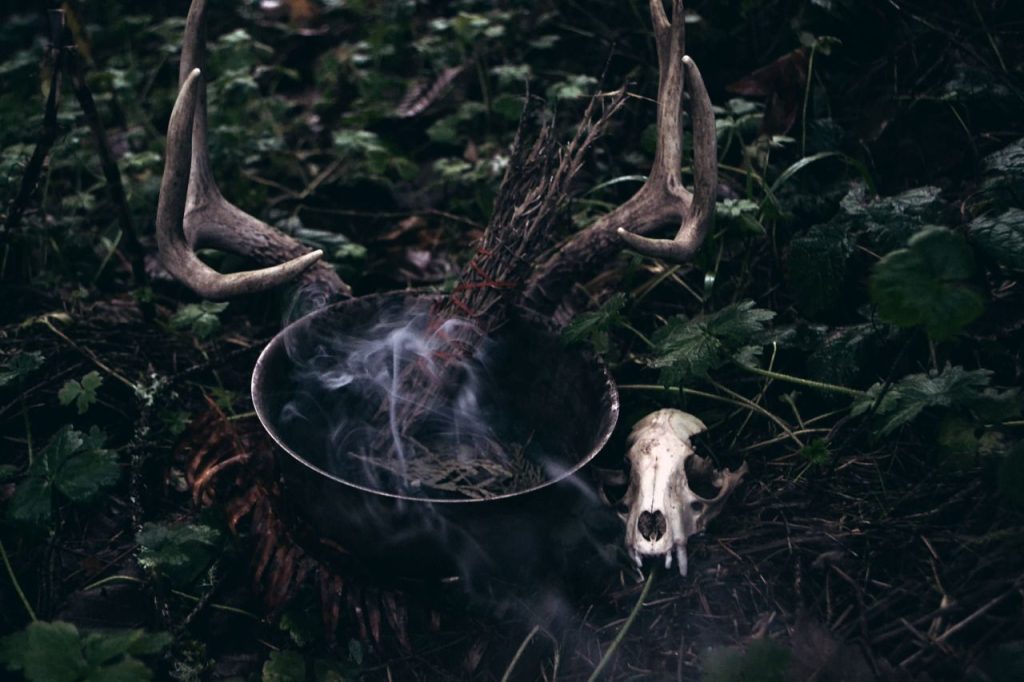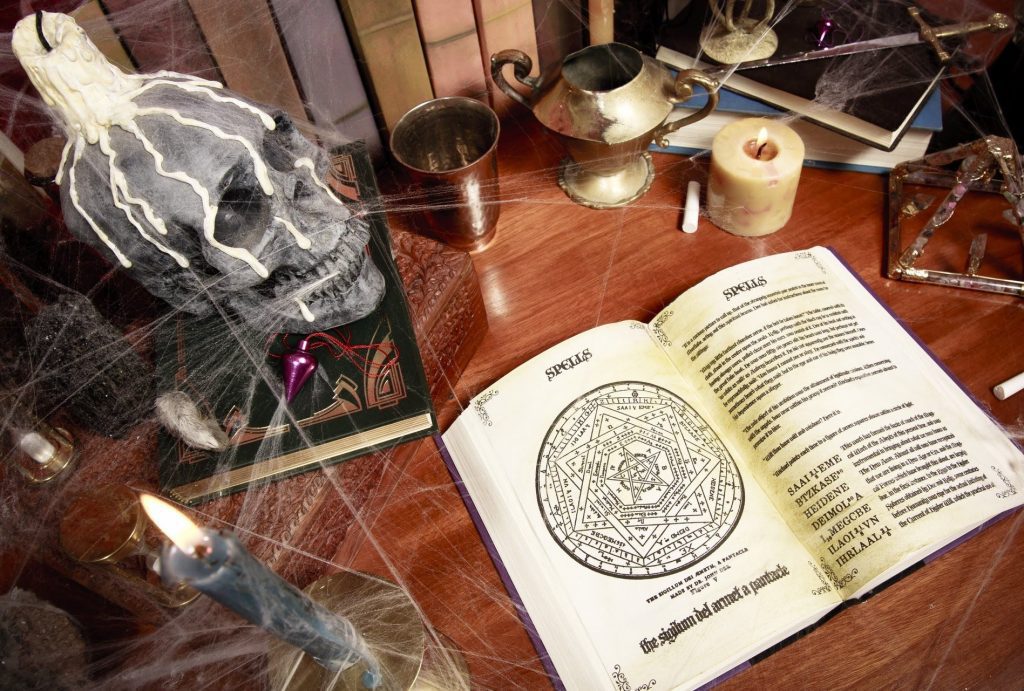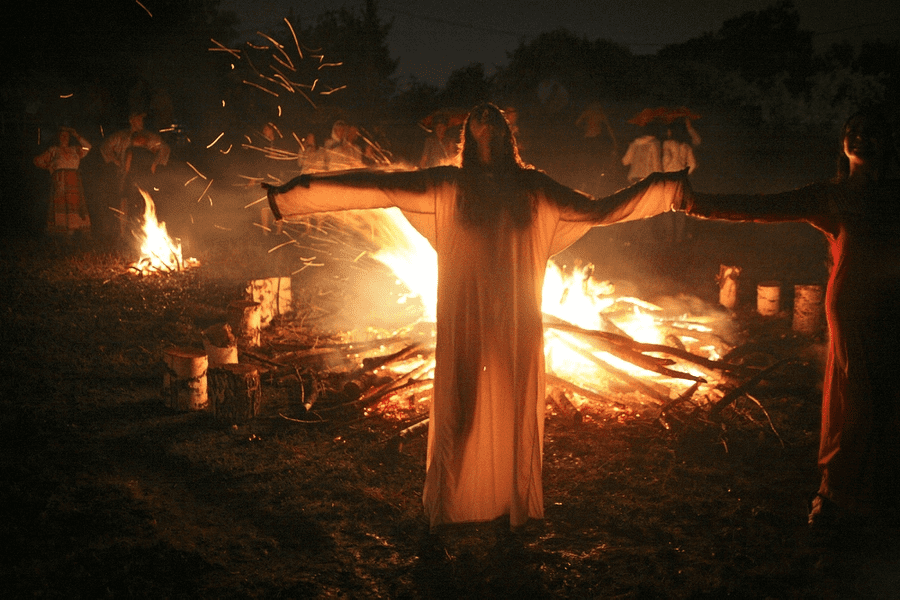The Curse Mark of Death is a captivating concept that has intrigued many throughout history. Associated with tales of ancient curses and supernatural forces, this enigmatic mark is said to bring about doom and demise to those who bear it. In this article, we will delve into the mythology and legends surrounding the Curse Mark of Death, exploring its origins, supposed effects, and the intriguing allure it holds in the realm of folklore and imagination, and witch symbols of curses.
Origins and Mythology of The Curse Mark of Death
The origins of the Curse Mark of Death are deeply rooted in the annals of mythology, folklore, and human psychology. While there isn’t a single specific origin story for this concept, it’s fascinating to explore how various cultural and historical influences have contributed to its development.
Ancient Symbolism and Fear of Death: The fear of death is a primal aspect of human nature, dating back to our earliest civilizations. In ancient times, death was often surrounded by mystery, and the lack of medical understanding or scientific explanations led to the development of intricate belief systems. These belief systems gave birth to symbols and rituals meant to mitigate the unknown aspects of mortality. The concept of a “curse mark” was likely an extension of these fears, serving as a representation of the inevitable and a way to conceptualize the unknowable.
Cultural Myths and Legends: Many cultures around the world have stories and myths that involve curses and marks associated with death. The “Mark of Cain” from Judeo-Christian tradition is one such example. According to the Bible, after Cain murdered his brother Abel, he was marked by God to protect him from harm. This mark is often interpreted as a form of punishment but also a sign of divine protection. This notion of a mark being linked to death or consequence has found its way into various cultures, suggesting a universal human fascination with such concepts.
Magical and Supernatural Beliefs: Throughout history, the idea of markings that carry supernatural or magical properties has been prevalent. In many cultures, tattoos, scars, and symbols were believed to have protective or ominous qualities. Ancient civilizations often used these markings as a means of connecting with spiritual forces, ancestors, or gods. Over time, this belief in the power of symbols and marks likely contributed to the development of the curse mark concept, where a specific mark becomes a harbinger of death or misfortune.
Literary and Artistic Inspirations: As storytelling evolved, so did the concept of the curse mark of death. Literature, art, and other creative forms allowed for the exploration of complex themes related to mortality and human nature. From classic literature to contemporary fantasy novels, writers have used curse marks as a way to delve into characters’ struggles with mortality, morality, and personal growth. These artistic interpretations have further shaped and expanded the concept’s significance in our collective imagination.
Modern Interpretations: In the modern era, the curse mark of death continues to evolve in response to changing cultural and technological landscapes. It has been adapted into video games, comics, movies, and other forms of media, reflecting contemporary concerns and anxieties. In these adaptations, the curse mark often represents a fusion of ancient fears and modern anxieties, reflecting humanity’s ongoing struggle to come to terms with mortality and the unknown.
In essence, while there isn’t a singular origin story for the Curse Mark of Death, its roots can be traced back to the innate human fear of mortality, cultural myths, supernatural beliefs, and the evolution of storytelling. This complex interplay has given rise to a concept that resonates deeply with our collective consciousness, offering a window into our eternal fascination with life, death, and the enigmatic spaces in between.


Symbolism and Fear
Symbolism and fear are integral components of the Curse Mark of Death, intertwining to create a potent narrative device that resonates deeply with human emotions and experiences. This complex interplay serves as a vehicle for exploring the mysteries of mortality and the darkness that resides within us all.
Confronting Mortality: At its core, the Curse Mark of Death is a symbol that encapsulates the inevitability of mortality. This universal truth has been a central theme in human existence since time immemorial. The mark serves as a stark reminder of our impermanence, forcing us to confront the unsettling reality that one day, we will all face the unknown. The Curse Mark’s presence amplifies our vulnerability, tapping into a primal fear that often lies dormant beneath our daily routines.
Tapping into Primal Fears: Human beings are wired to fear the unknown, and death is perhaps the most profound unknown of all. The Curse Mark of Death capitalizes on this innate fear, manifesting as a tangible symbol that represents the ultimate end. It invokes a visceral response, triggering anxiety and dread as we grapple with our own mortality. The mark acts as a conduit, channeling our subconscious fears to the forefront of our minds, where they can be examined and contemplated.
Exploring Dualities: The Curse Mark of Death also delves into the duality of human nature. On one hand, it symbolizes our desire for longevity and immortality—an aspiration that spans cultures and eras. This longing to overcome death is deeply ingrained in our collective consciousness. On the other hand, the mark forces us to confront our darker inclinations. It reflects the ancient concept of “memento mori,” a reminder of death’s inevitability that prompts us to reflect on our actions and decisions.
Morality and Accountability: The Curse Mark of Death often comes with a moral dimension. In stories where characters are afflicted with the mark, their actions are often linked to its appearance. This connection between deeds and destiny invites contemplation of ethical choices and consequences. The mark serves as a judge, a tangible manifestation of the repercussions of one’s actions. This adds depth to characters’ journeys as they navigate the path between redemption and damnation.
Narrative Tension and Resonance: Narratively, the Curse Mark of Death injects tension and urgency into stories. It becomes a ticking clock, propelling characters to seek solutions, redemption, or meaning in the face of their impending fate. This urgency resonates with readers and audiences, mirroring our own struggles to find purpose and significance in the finite time we have.
Cultural Variations: Interestingly, the Curse Mark of Death takes on different forms and nuances across cultures. It may manifest as a literal mark, a supernatural affliction, a divine punishment, or even a metaphorical burden. Each cultural iteration taps into unique fears and beliefs, showcasing how deeply ingrained the fear of death is in our global psyche.
The Psychological Impact
The Curse Mark of Death is not merely a superficial plot device; it delves into the very core of human psychology, uncovering intricate layers of emotions, fears, and desires. This enigmatic concept has the power to evoke powerful psychological responses in both characters within stories and readers or viewers engaging with them.
- Confronting Mortality and Existential Anxiety: One of the most profound psychological impacts of the Curse Mark of Death is its ability to force characters and audiences to confront their mortality head-on. This confrontation often leads to existential anxiety—a fundamental aspect of human psychology. The curse mark acts as a mirror, reflecting the deeply ingrained fears and uncertainties surrounding our existence. This anxiety can prompt deep introspection about life’s purpose, the nature of existence, and the legacy we leave behind.
- The Struggle for Control: In stories featuring the curse mark, characters are often faced with an impending doom they cannot escape. This lack of control over their fate highlights another psychological facet—the human desire for control and agency. The curse mark amplifies the struggle between the yearning for control and the recognition of the uncontrollable forces that shape our lives. This dynamic often leads to characters’ attempts to regain control over their destiny, mirroring our real-world quest for a sense of agency in a chaotic universe.
- Confronting the Shadow Self: The Curse Mark of Death can act as a symbol for the darker aspects of human nature, often referred to as the “shadow self.” It represents the inner turmoil, repressed emotions, and hidden desires that exist within us all. When characters are marked by the curse, they are forced to confront these aspects of themselves. This confrontation can lead to character growth, as they grapple with their own inner demons, acknowledging their flaws, and striving for self-improvement. This process resonates with real-life experiences of self-discovery and personal development.
- Identity and Transformation: The presence of the curse mark can trigger a profound identity crisis. Characters are compelled to reevaluate their sense of self in light of the impending death symbolized by the mark. This exploration of identity speaks to the fluid nature of human psychology and our continual evolution. Just as characters redefine themselves in response to the curse mark, we too adapt and redefine our identities as we navigate life’s challenges.
- Narrative Catharsis: Engaging with stories featuring the Curse Mark of Death can offer a cathartic experience for audiences. The psychological journey of characters as they face their mortality and inner struggles can resonate deeply with readers and viewers. Witnessing characters’ growth, introspection, and ultimate confrontations with their fates allows audiences to vicariously explore their own emotional landscapes, leading to a sense of release and emotional relief.
- Empathy and Connection: The psychological impact of the curse mark creates a bridge between fictional worlds and real-life emotions. Through empathy, audiences connect with characters who mirror their own psychological struggles. This connection transcends cultural and temporal boundaries, reminding us of our shared human experiences and emotions.
The Curse Mark of Death serves as a psychological exploration tool, allowing creators and audiences to delve into the intricate workings of the human psyche. By tapping into existential anxieties, the quest for control, the confrontation with the shadow self, identity transformation, and the power of narrative catharsis, this concept becomes a gateway to understanding the depths of our emotions and the complexities of our minds.


Narrative Applications
The Curse Mark of Death is more than just a concept; it’s a narrative device that holds the power to transform stories into intricate webs of intrigue, tension, and emotional depth. Through its various applications in literature, film, and other forms of storytelling, this enigmatic symbol adds layers of complexity to characters and plots, captivating audiences and prompting them to reflect on life’s mysteries.
Character Development: One of the most compelling narrative applications of the Curse Mark of Death is its role in character development. When characters are marked with this ominous symbol, they undergo profound transformations. The mark becomes a catalyst for change, forcing characters to confront their fears, insecurities, and personal flaws. This evolution often leads to inner growth, as characters navigate the challenges posed by the curse and grapple with their own mortality.
Moral Dilemmas and Choices: The curse mark often comes with a moral dimension, intertwining characters’ choices with their fate. This narrative technique invites readers or viewers to contemplate ethical dilemmas, as characters must navigate the consequences of their actions. The curse mark serves as a constant reminder of the stakes, encouraging characters—and by extension, the audience—to consider the implications of their decisions.
Quests and Journeys: The Curse Mark of Death frequently sets characters on quests or journeys that are central to the storyline. These quests may involve seeking ways to break the curse, finding redemption, or unraveling the mysteries surrounding the mark. These journeys inject a sense of urgency into the narrative, propelling characters forward and fostering suspense that keeps audiences engaged.
Tension and Suspense: The curse mark’s inherent association with death creates a palpable sense of tension and suspense throughout a story. Characters are driven by the looming threat, motivating them to take action and make difficult choices. This tension intensifies as the characters’ struggle to avoid their grim fate becomes more desperate.
Metaphor for Personal Struggles: Beyond its literal implications, the Curse Mark of Death can also function as a metaphor for various personal struggles. It becomes a representation of life’s adversities, internal conflicts, or psychological burdens. This metaphorical application resonates with audiences who may see their own challenges reflected in the characters’ journey to overcome the curse.
Exploration of Immortality and Legacy: The curse mark often prompts characters to contemplate their desire for immortality and their legacy. This exploration of themes tied to the human desire for lasting significance adds philosophical depth to the narrative. Characters grapple with questions of what it means to truly live and the mark they will leave on the world.
Reader and Viewer Engagement: The Curse Mark of Death captivates readers and viewers by immersing them in a world where life and death are inextricably linked. The suspense and emotional stakes generated by the mark’s presence make the narrative more immersive. Audiences become emotionally invested in the characters’ struggles, fostering a deeper connection with the story.
The Curse Mark of Death is a narrative tool of profound impact, offering creators the means to explore character growth, moral dilemmas, quests, tension, and metaphors for personal struggles. By weaving this enigmatic symbol into their stories, creators evoke emotional responses and prompt contemplation of life’s uncertainties.
Breaking the Curse
In narratives where characters are afflicted with the Curse Mark of Death, the quest to break the curse becomes a central element, driving the storyline and offering a powerful exploration of themes such as redemption, self-discovery, and the struggle against fate. The journey to break the curse often follows a pattern of challenges, sacrifices, and inner growth, mirroring the hero’s journey archetype found in mythology and storytelling.
- The Call to Action: The discovery of the curse mark’s existence acts as the initial call to action. Whether characters stumble upon the mark accidentally or receive a premonition, they are thrust into a world of uncertainty and fear. The mark symbolizes the ultimate consequence, making breaking the curse an urgent and paramount goal.
- The Quest Begins: Breaking the curse initiates a heroic journey, often leading characters on a path filled with trials and tribulations. These challenges serve as tests of the character’s determination, resourcefulness, and moral compass. The journey becomes an opportunity for characters to confront their weaknesses, learn from their mistakes, and evolve as individuals.
- Sacrifice and Determination: The curse often demands a significant sacrifice or series of sacrifices from the characters. This can range from physical challenges to emotional or moral tests. Characters must grapple with their fears and make difficult choices, illustrating their commitment to breaking the curse at any cost. These sacrifices underscore the depth of their resolve and dedication.
- Inner Transformation: The journey to break the curse often leads to profound inner transformation. Characters are forced to confront their own flaws, confront personal demons, and come to terms with their mortality. This process of self-discovery enables them to grow emotionally and morally, transcending their initial motivations and gaining a deeper understanding of themselves and the world around them.
- Allies and Adversaries: Characters on this quest typically encounter allies and adversaries along the way. Allies provide support, guidance, and camaraderie, while adversaries challenge the characters’ resolve and test their skills. The interplay between allies and adversaries enriches the narrative by showcasing different perspectives and contributing to character development.
- The Final Confrontation: The climax of the story often features a final confrontation, where characters face the ultimate challenge in their quest to break the curse. This confrontation may involve battling a powerful antagonist, making a selfless choice, or unlocking hidden strengths. The outcome of this climactic moment is pivotal in determining the fate of the characters and the resolution of the curse.
- Resolution and Redemption: Successfully breaking the curse can lead to a sense of resolution and redemption for characters. This resolution might involve breaking the literal curse, freeing themselves and others from its grip, or transcending its symbolic weight. The curse’s resolution often reflects the character’s growth and transformation, offering a satisfying conclusion to their journey.
- Reflection on Fate and Free Will: Ultimately, the journey to break the curse raises questions about fate and free will. Characters are forced to navigate the tension between destiny and the choices they make. This exploration serves as a mirror for the human experience, prompting readers or viewers to consider their own agency in the face of life’s uncertainties.
The quest to break the Curse Mark of Death is a narrative motif rich in symbolism and emotional depth. It guides characters through trials, sacrifices, and inner transformations, offering an engaging exploration of themes central to the human condition.


Modern Interpretations
Modern interpretations of the Curse Mark of Death have evolved to encompass diverse mediums, from video games to webcomics, showcasing its enduring allure. In the digital age, the curse mark’s symbolism finds new life, as interactive narratives allow audiences to immerse themselves in its enigmatic narrative. Video games often grant players agency in breaking the curse, offering a personalized experience of battling inner demons and external challenges.
In webcomics, the curse mark becomes a canvas for artists to explore themes of identity, existentialism, and interconnectedness. These modern adaptations reflect society’s ongoing fascination with mortality and our yearning for control in an unpredictable world. By embracing innovative platforms, the Curse Mark of Death continues to captivate imaginations and invites audiences to delve into the profound depths of human emotions and aspirations.
Conclusion
The curse mark of death remains a captivating and timeless concept that delves into the very essence of human existence. It serves as a mirror, reflecting our fears, desires, and aspirations. Whether it appears as an ancient symbol, a magical artifact, or a modern interpretation, the curse mark of death continues to challenge us to contemplate our own mortality and the choices we make in the face of an uncertain future.


Pingback: The Curse Mark of Death: Unraveling the Wonderf...